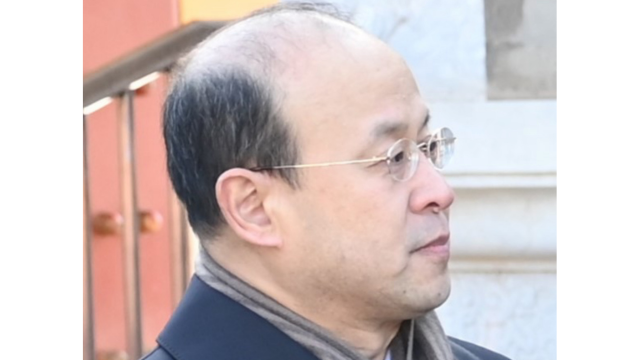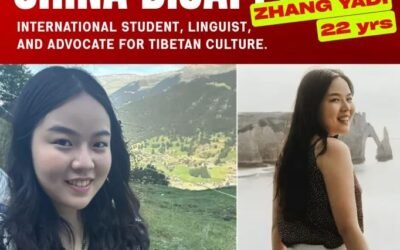Chinese Ambassador Xiao Qian uses World War II for propaganda purposes, but the true reality of the events was quite different.
by Mark Tarrant

In his op-ed “Australia and China Share History of Triumph in War on Fascism,” published in “The Australian” on 22 August 2025, Chinese ambassador to Australia Xiao Qian claims “The Communist Party of China held high the banner of the national united front against Japanese aggression, safeguarded the unity of resistance, and stood as the pillar of the entire nation’s resistance.”
Xiao Qian may be an ambassador from a communist dictatorship, but he is clearly not a historian.
On August 25, 1945, just ten days after Victory over Japan Day, U.S. Army Capt. John Birch, a devout Baptist and Mandarin speaker, was murdered in northern China by Chinese communist soldiers, the United States’ erstwhile “allies” in its fight against the Japanese.
“Birch was shot in the thigh, carried to a cinder pile near the train station, and bayoneted to death,” Richard Bernstein writes in his book “China 1945.” “The body was found wrapped in a straw mat, the hands and feet were bound. There was a large wound in the left thigh, a large hole in the right shoulder, and the whole face had been mutilated beyond recognition.”
Nine months earlier, on December 7, 1944, the Chinese Communist Party (CCP) had organized a well-publicized rescue mission by its Eighth Route Army of the eleven U.S. crew members of a downed B-29 Superfortress bomber in Japanese-controlled Hebei province.
The CCP’s high-profile rescue of downed U.S. airmen and, in the next breath, the killing of Birch was in sync with Zhou Enlai’s communist strategy of “da da tan tan” or “fight fight talk talk” when dealing with the United States—a CCP tactic that continues to this day.
There was nothing heroic in rescuing a few downed U.S. airmen. After all, it was the Americans taking the fight to the Japanese while the CCP sat back and waited.
Mao Zedong always had his sights set on killing his fellow Chinese—not the invading Japanese nor the Americans who stayed on to help China avoid civil war.
In his book “The Second World War,” eminent military historian Antony Beevor explains that Mao aimed to seize Nationalist territory rather than fight the Japanese.
Beevor writes that following the October 1938 Central Committee plenum, Mao’s policy was strict: “Communist forces were not to fight the Japanese, unless attacked. They were to conserve their strength for seizing territory from the Nationalists. Mao made clear that Chiang Kai-shek was their ultimate opponent, their ‘enemy No.1.’’’
Soviet TASS China war correspondent Peter Vladimirov confirmed Mao’s policy when he reported on the Eighth Route Army limiting itself “to sluggish defensive fighting of local importance. Whenever fighting starts on the enemy’s initiative, the Eighth Route Army rolls back to the mountains, avoiding clashes.”

Beevor explains that by 1943, British intelligence was certain the Communists had made an unofficial deal with the Japanese under which both sides restricted their operations against each other, so that the Nationalist forces remained the primary target.
Bernstein writes that the Communists successfully propagated the notion that they had struggled bitterly, bravely, and continuously against the invader. However, their million-man army had engaged in only small-scale hit-and-run attacks and not a single major military operation against the Japanese since the Hundred Regiments Offensive of 1940.
The myth of war heroism by the CCP has now become part of the Western lexicon.
According to Beevor, “Smedley, Theodore White, and other influential American writers could not accept for a moment that Mao might turn out to be a far worse tyrant than Chiang Kai-shek. The personality cult, the Great Leap Forward, which killed more people than in the whole of the Second World War, the cruel madness of the Cultural Revolution, and the seventy million victims of a regime that was in many ways worse than Stalinism proved totally beyond their imagination.”
Former Hong Kong Legislator Ted Hui, granted political asylum by the Australian government on August 15, 2025, the 80th anniversary of Victory over Japan Day, encapsulates what Australians were fighting for in WWII—freedom and democracy, the polar opposite of what Ambassador Xiao Qian represents.

Mark Tarrant grew up in Hong Kong and practices as a lawyer in Sydney. He also represented pro bono (i.e., for free) Drew Pavlou, the student University of Queensland expelled for his public criticism of the CCP.



